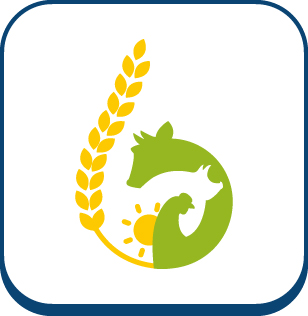Documentations
Les filières porcines 'sans antibiotiques' : un marché mature ? - vidéo IFIP
Christine ROGUET, agroéconomiste et cheffe de projet à l'IFIP - Institut du porc, présente les résultats de l'analyse des filières produisant du porc sans antibiotique en France en 2020 dans…
Publié en 2022Prix des matières premières : entre guerre en Ukraine et fondamentaux tendus (situation au 5 mai 2022) - vidéo IFIP
Cette semaine, Mathilde Le Boulch, Ingénieure d'études économiques à l'IFIP fait un point sur le prix des matières premières pour l'aliment des porcs en vidéo Eco'Porc de 4 minutes .…
Publié en 2022Conjoncture porcine : la flambée des cours marque une pause (situation au 11 mai 2022) - vidéo IFIP
La cotation du porc stabilisée en France après la flambée de mars Cette semaine, Elisa Husson, Ingénieure d'études économiques à l'IFIP, tire le bilan du prix des porcs en avril…
Publié en 2022Bien-être animal, le cas de l'Allemagne - vidéo IFIP
Christine Roguet, ingénieure du Pôle Economie de l'IFIP présente en vidéo Eco'Porc de 4 minutes : 'Bien-être animal, le cas de l'Allemagne' diffusée dans le cadre du partenariat avec la…
Publié en 2022Evolution du commerce des produits du porc au 1er trimestre 2022 - vidéo IFIP
Elisa Husson, ingénieure d'études économiques en charge de la conjoncture du marché porcin à l'IFIP, vous présente en vidéo EcoPorc de moins de 3 minutes, l'évolution du commerce des produits…
Publié en 2022Prix des Matières premières : dans l'expectative des futures récoltes (situation au 22 juin 2022) - vidéo IFIP
Mathilde Le Boulch, ingénieure d'études économiques à l'IFIP vous propose son point mensuel en vidéo Eco'Porc de 3 minutes sur la conjoncture des marchés des matières premières et aliment porc…
Publié en 2022Une remontée encore timide des cours du porc (situation au 1er juillet 2022) - vidéo IFIP
Elisa Husson, ingénieure d'études économiques vous présente la conjoncture au 1er Juillet 2022 des marchés du porc en vidéo EcoPorc de 3 minutes 40 : 'une remontée encore timide des…
Publié en 2022Compétitivité de l'alimentation animale : exemple de 3 producteurs européens - vidéo IFIP
Mathilde Le Boulch, ingénieur d'études économiques à l'IFIP vous présente une comparaison européenne de la compétitivité de la fabrication d'aliment et du prix de l'aliment porc, entre la France et…
Publié en 2022Des prix du porc soutenus durant l'été (situation au 1er septembre 2022) - vidéo IFIP
Elisa Husson, ingénieure d'études économiques à l'IFIP vous présente la conjoncture du marché du porc en ce début septembre 2022 en vidéo Eco'Porc de 3 minutes 45.
Publié en 2022Rentrée en demi-teinte pour les marchés des matières premières (situation au 9 septembre 2022) - vidéo IFIP
Mathilde Le Boulch, ingénieure d'études économiques à l'IFIP vous propose en vidéo hebdomadaire Eco'porc de 3 minutes, le point mensuel de la conjoncture des marchés Matières premières et Aliment du…
Publié en 2022Le déclin de la production porcine en Europe est enclenché - vidéo IFIP
Elisa Husson, ingénieure d'études économiques à l'IFIP vous propose une vidéo Eco'Porc de 4 minutes pour faire un état des lieux de la production porcine en Europe.
Publié en 2022Volatilité des cours des Matières Premières : impact de la guerre en Ukraine - vidéo IFIP
Mathilde Le Boulch, ingénieure d'études économiques à l'IFIP, fait un point sur la conjoncture des marchés des matières premières et de l'aliment en une video Eco'Porc de 3 minutes.
Publié en 2022






